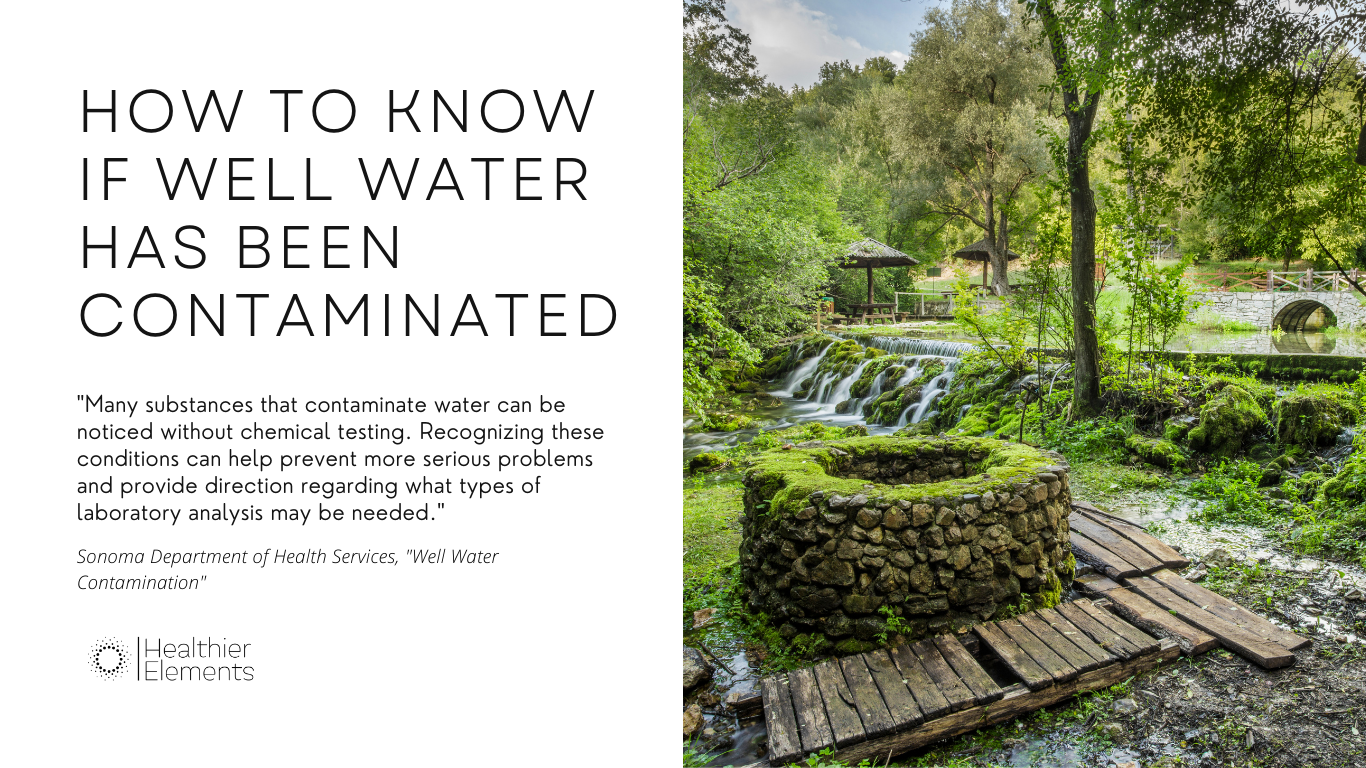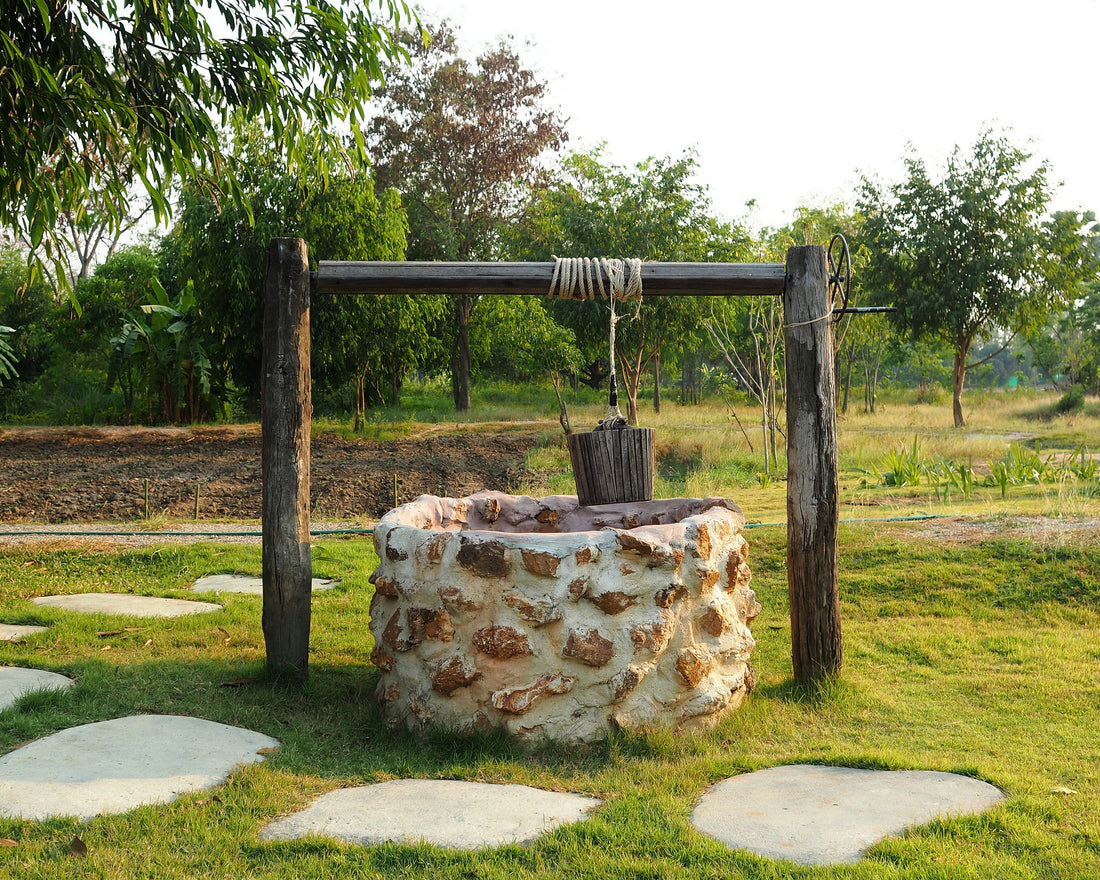According to the United States Geological Survey, “more than 43 million people—about 15 percent of the U.S. population—rely on domestic (private) wells as their source of drinking water.” An additional 100 million US residents – which amounts to roughly 35% of our population – “receive their drinking water from public-supply wells.” Unfortunately, many private wells across the country have been contaminated by various metals, minerals and toxic chemicals. Jack Healy elaborates in his article “Rural America’s Own Private Flint: Polluted Water Too Dangerous to Drink” for The New York Times. Referencing research conducted by the USGS, Healy notes that contamination is routinely found “in about one of every five wells.” In some areas, “industrial farms and slack regulations” are to blame for polluted well water. In others, development, droughts, floods and old wells are responsible. Some contaminants are easily removed while others are nearly impossible to get rid of. Below, we explain how wells are polluted, which pollutants are often found in private well water and how to protect well water from contaminants.
How Do Wells Get Polluted?

As mentioned above, there are a number of ways in which private well water can become polluted. According to the EPA, “private wells can be contaminated by both naturally occurring sources and by human activities.” This means that the geology of your build site could be to blame – with naturally occurring chemicals, minerals and metals that exceed recommended levels for safe drinking water. Natural disasters – especially earthquakes, torrential floods and high winds – could pollute your well too. Industrial activities, animal keeping – and even basic household chores – can also pollute private well water. Identifying the most common pollutants in private well water, the EPA lists microorganisms, nitrate, nitrite and heavy metals. Other contaminants include organic chemicals, fluoride and radionuclides.
Which Pollutants Are Commonly Found in Private Well Water?

Harmful bacteria and other microorganisms might contaminate your well if it is located downhill from where you keep animals or sited your septic system. A malfunctioning septic system could easily be responsible for contaminated private well water. The EPA resource notes that “leakage of waste from underground storage tanks and effluent from septic leach fields can reach a water source and result in microorganisms being present in water wells.” Nitrates and nitrites are often added to fertilizers and can “contaminate a private well through groundwater movement and surface water seepage.” Your well water might become contaminated with heavy metals if the plumbing in your house is outdated, if industrial activity occurs nearby or if these metals are found in natural deposits on your property.
Risk of VOCs and SOCs in Water Supply
Lastly, VOCs and SOCs might contaminate your water supply if you routinely pour household detergents and other products down the drain in your kitchen or bathrooms. Agriculture and industry are other sources of contamination, as they routinely use chemicals that are known to pollute ground water. According to the Illinois Environmental Protection Agency, SOCs and VOCs can be incredibly harmful to human health. The Agency's resource on "Common Contaminants" notes that "the majority of SOCs are made up of pesticides, herbicides and insecticides."
Exposure to pesticides through drinking water can have both acute and lasting consequences -- from chemical burns and vomiting to hormonal imbalances and immunity issues. This 2021 study published in the International Journal of Environmental Research and Public Health explains how the human body reacts to persistent exposure to pesticides. Volatile organic compounds are also common byproducts of industry and "can have a variety of potential health effects." Unfortunately, VOCS "can persist for many years in groundwater and can travel long distances from where they were spilled or dumped." Identifying harmful levels of VOCs in ground water supply can be difficult as they produce no odor.
How to Know If Well Water Has Been Contaminated

Routine testing is the best way to know if your water supply has become contaminated. However, there are certain signs to keep an eye out for. The Sonoma County Department of Health Services resource "Well Water Contamination" explains how you can see, smell and taste potential contaminants. In your home, you might notice "scale, scum or encrustation" when you turn on the tap. You might also notice orange, red, green, brown or black stains in your sink or on faucets. These stains could be the result of high acidity or they could be caused by high levels of copper, manganese or iron.
Other pollutants could cause your water to taste particularly salty, soapy or sweet. As one might imagine, water tastes salty when its sodium content is high and soapy when there is a detectable concentration of dissolved alkaline minerals. If your water tastes sweet or chemically, it might be contaminated with VOCs, though most homeowners will be unable to detect this by taste. Certain scents could also ring alarm bells. Most common are "rotten egg odors," "detergent odors," "musty or earthy smells" and "chlorine smells." Should you notice any change in the flavor, scent or appearance of your home's drinking water, immediately contact a professional.
10 Ways to Protect Your Well Water from Common Pollutants
#1 Sink Your Well On High Ground

First on our list of ways to protect your well water from common pollutants is to sink your well on high ground so you can drain surface water away from the well naturally. Consult a licensed well driller when sinking a new well. According to Utah State University’s “How to Protect Your Well Water” fact sheet, “a well downhill from a livestock yard, a leaking fuel tank, or a septic system, runs a greater risk of contamination than a well on the uphill side of these pollution sources.”
Most county and state ordinances also require property owners to keep equipment and livestock away from the well – typically a minimum distance of 100 feet away – to avoid risk of contamination. The EPA resource “Septic Systems and Drinking Water” notes that “the contamination risk to your well is lower the farther apart the well and septic system are located.” Contamination risk from human and animal waste is far higher if “the well is downgradient" of septic tanks or livestock yards. This risk also increases if the well casing is cracked, which we address in further detail below.
Of course, this is not possible for those with a pre-existing well on their property. Keep in mind that if there was already a well on site when you bought your property, it might not have been subject to the same standards that are now required by your state or municipality. For example, existing wells are required by Utah state law “only to meet separation requirements in effect at the time of well construction.”
#2 Seal the Well Properly
Next, property owners should ensure that their well is properly sealed. According to the EPA resource “Protect Your Home's Water,” property owners should install a tamper-proof well cap or “sanitary seal to prevent unauthorized use of or entry in to the well.” Property owners should periodically inspect their well for “broken or missing well caps” and “settling or cracking of surface seals.” Make sure the well cap is secured to the well casing at all times and that the casing has not eroded in any way. At the same time, be sure to seal off any exposed parts of abandoned wells on your property.
#3 Don’t Use, Store or Dispose of Chemicals Near the Well Site

As mentioned above, human activities can lead to well water contamination. Because of this, your local health department probably requires property owners to maintain a pollution-free buffer zone around their wells. Consult a contractor or government official to make sure you are in compliance.
To avoid polluting your own well water, do not use, store or dispose of hazardous chemicals near the well site. Property owners should also avoid flushing certain chemicals down toilets or pouring them down drains in their homes. The University of Georgia resource “Protecting Your Well and Wellhead” notes that property owners should never “dispose of excess medications” in this manner. Instead, they should “take medication to a collection facility…if possible.”
The Centers for Disease Control (CDC) resource “Well Maintenance” explains how to keep your well water clear of other types of household and industrial chemicals. According to the CDC, “all hazardous materials, such as paint, fertilizer, pesticides, and motor oil, should be kept far away from your well.” If you need to mix harsh chemicals for any reason, never “place the hose inside the mixing container.” Doing so could “syphon chemicals into a household’s water system.”
#4 Test Your Well Water Often

The CDC recommends that all property owners test their wells annually, checking for “mechanical problems, cleanliness, and the presence of certain contaminants, such as coliform bacteria, nitrates/nitrites, and any other contaminants of local concern.” However, some property owners must test their wells more often than just once each year. In their resource “Private Well Water Safety and Testing,” the Maine Center for Disease Control & Prevention Division of Environmental and Community Health explains. According to this resource, property owners should test their wells if they are expecting a new baby or if the water changes in some way (taste, smell or appearance).
Property owners should also arrange a water test after a well “runs dry and comes back” or after repairs were made to the well. You might consider testing well water if a drinking water system was repaired or installed. It is important to test well water after storms and other natural disasters as well. Surface runoff from a flooded river or from storm water can carry pollutants from miles away. If the water test detects contaminants like chlorine, chloramines, pesticides and/or herbicides, you might consider installing a water filtration system. The Pelican Whole House Water Filter is effective not only at eliminating chemical contaminants but also at sediment removal.
#5 Seek Expert Help to Treat Contaminated Well Water

If contaminants are discovered in drinking water wells on your property, seek expert help to treat your well water instead of trying to fix the problem yourself. Trying to fix mechanical problems or treat your well’s water on your own without a licensed professional could be dangerous. Cliff Treyens – Director of Public Awareness for the National Ground Water Association – explains in his fact sheet “What’s a Private Well Owner to do? Eight Tips for Maintaining Your Well” for the NGWA. Treyens writes that “well owners who try to service their own wells…usually fail to solve the problem or make it worse” because they do not have the necessary training or equipment to prevent inclusion of water contaminants.
Furthermore, Treyens notes that each time a property owner “removes a well cap and attempts to service the well in some way, there’s the potential to unwittingly introduce bacterial or other contamination into the well.” The owner could also “drop objects (tools for instance) into the well, getting the pump stuck in an effort to replace it, or even electrocution when working with submersible pumps.” Unless the homeowner is a licensed contractor him or herself, “it’s always best to contact a qualified professional water well systems contractor to conduct any kind of service on your well.”
#6 Pump Well Water Until It Runs Clear If Disaster Occurs

Hiring a professional is especially important after a natural disaster. If your well has flooded, contact with the well pump could electrocute you and exposure to the well’s water could cause you to fall ill. The EPA resource “Protect Your Home's Water” recommends that you “stay away from the well…[after] a natural disaster or other calamity.” Instead, you should “get assistance from a well or pump contractor to clean and disinfect your well before turning on the pump.” According to the EPA, you should continue to pump well water until it runs clear. If your well water is still cloudy, the EPA suggests contacting your “county or state health department or extension service.”
#7 Check For Structural Problems Due to Age and Well Type

Certain types of wells – like hand-dug and bored wells – are more vulnerable to contamination. Wells that were dug, bored or sunk more than thirty years ago are also more vulnerable to contamination. Most older wells in the US are either pit or dug wells. Roger M. Waller explains in his article “Ground Water and the Rural Homeowner” for the United States Geological Survey. According to Waller, “dug and bored wells have a large diameter and expose a large area to the aquifer” but are quite shallow when compared to other types of wells. Dug and bored wells can also “obtain water from less-permeable materials such as very fine sand, silt, or clay.” These characteristics of dug and bored wells make them more susceptible to contamination.
Generally, older hand-dug wells are most “subject to contamination.” In fact, a 2018 study examining the groundwater quality of bored and hand-dug wells in Ghana found that “shallow hand-dug wells in the area have more sanitary issues that can cause pollution compared to the boreholes.” Flooding of the ground surface is one common way shallow wells become polluted – especially when the well is not sealed properly or the sanitary seal is damaged.
#8 Make Yourself Aware of Nearby Activities
Certain types of wells are easily polluted by ground water, rain water or storm water. As such, it is vital to make yourself aware of any nearby industrial or agricultural practices that could pollute your well. Research any potential sources of contamination surrounding your property to keep your well water safe.
#9 Don't Bury the Wellhead

Next, property owners should never bury the well head because doing so heightens the risk of bacterial contamination. The Government of New Brunswick fact sheet “Do’s and Don’ts for private well owners” explains. According to the resource, “when a well head is buried under ground, it is at greater risk of surface water infiltration and therefore of being exposed to potential nearby sources of contamination like road salt, pesticides, fertilizers, oil and gasoline etc.” Buried wellheads might be difficult to locate, which could also be dangerous. In general, property owners should ensure the wellhead is at least a foot above ground.
#10 Keep Records of Installation, Maintenance, Repairs, Testing and Treatment
Lastly, property owners should keep meticulous records of installation maintenance, repairs, testing and treatment. In addition to work done on their wells, property owners should also document any work done on their septic and/or water filtration system. This is especially important with septic systems because septic systems can influence the quality of well water.




















